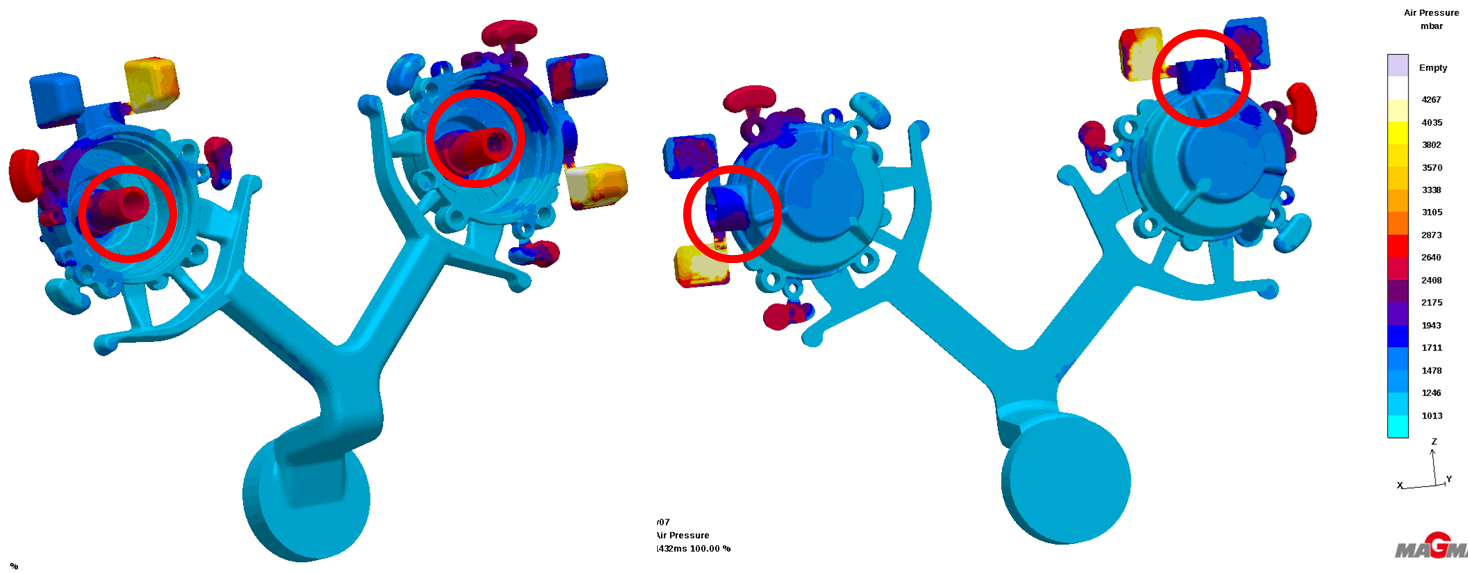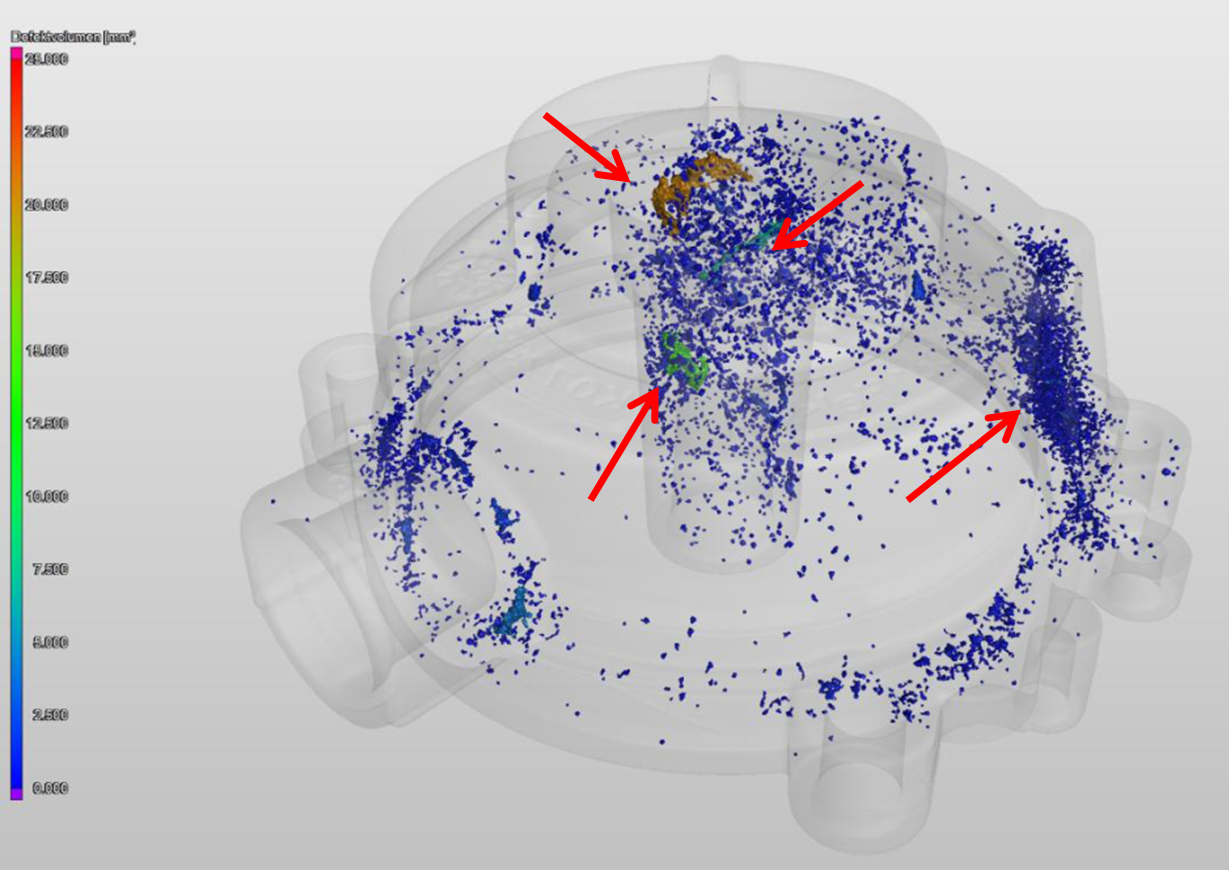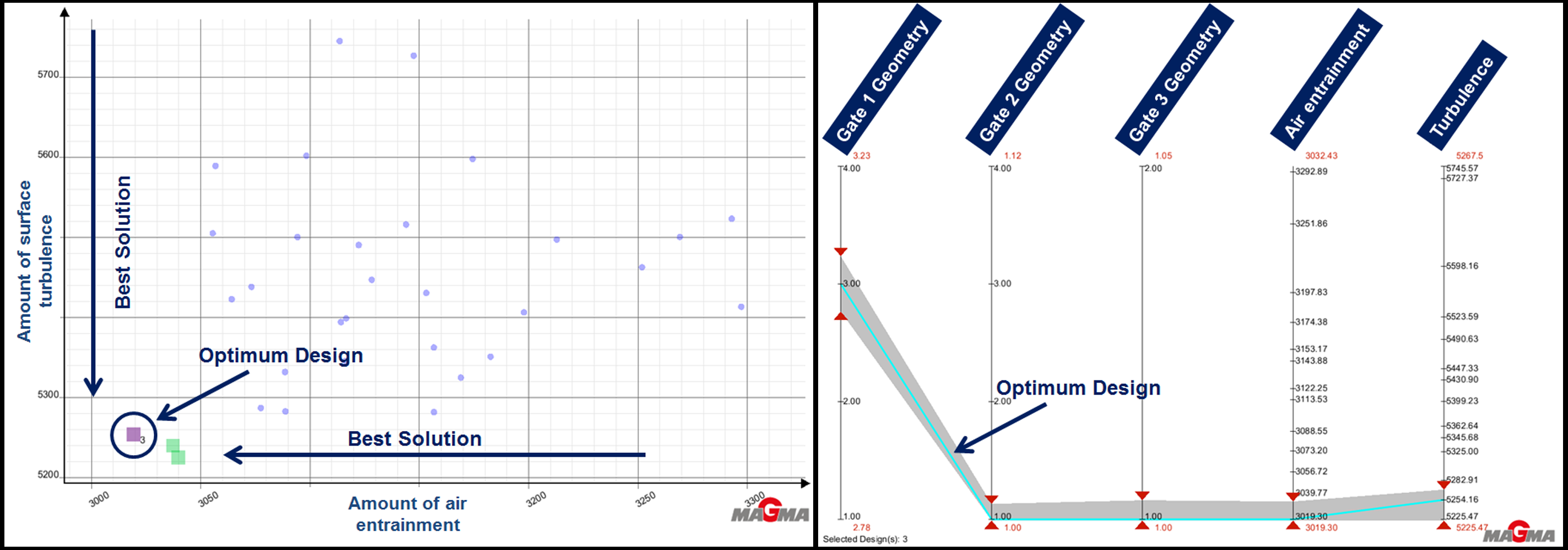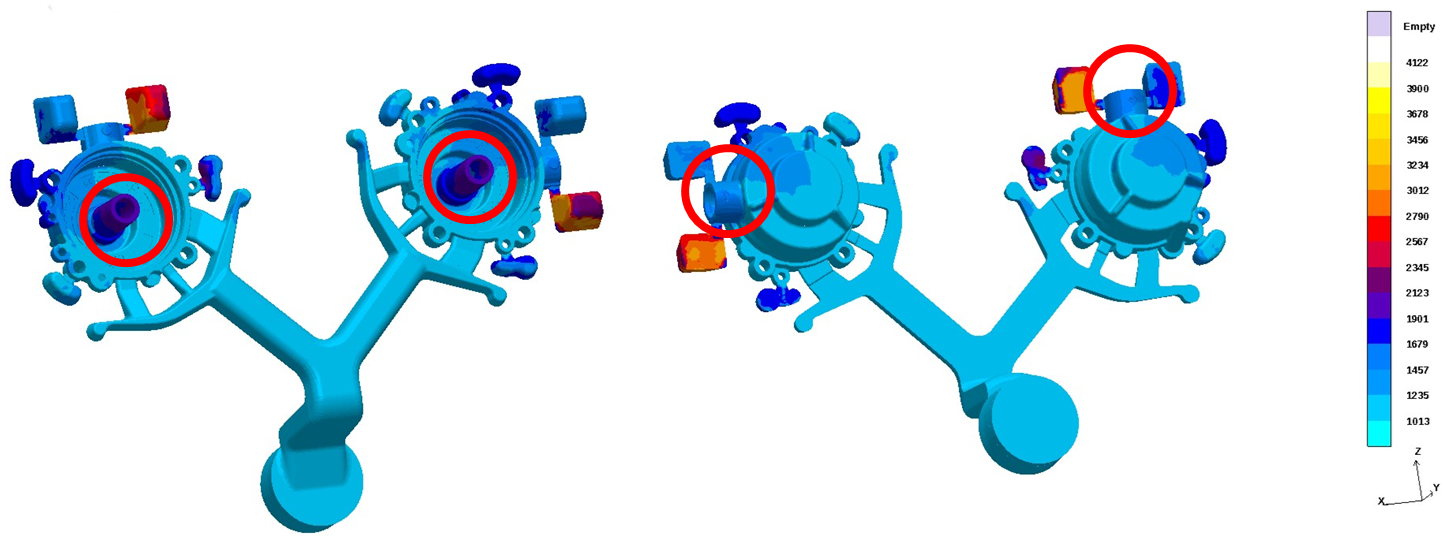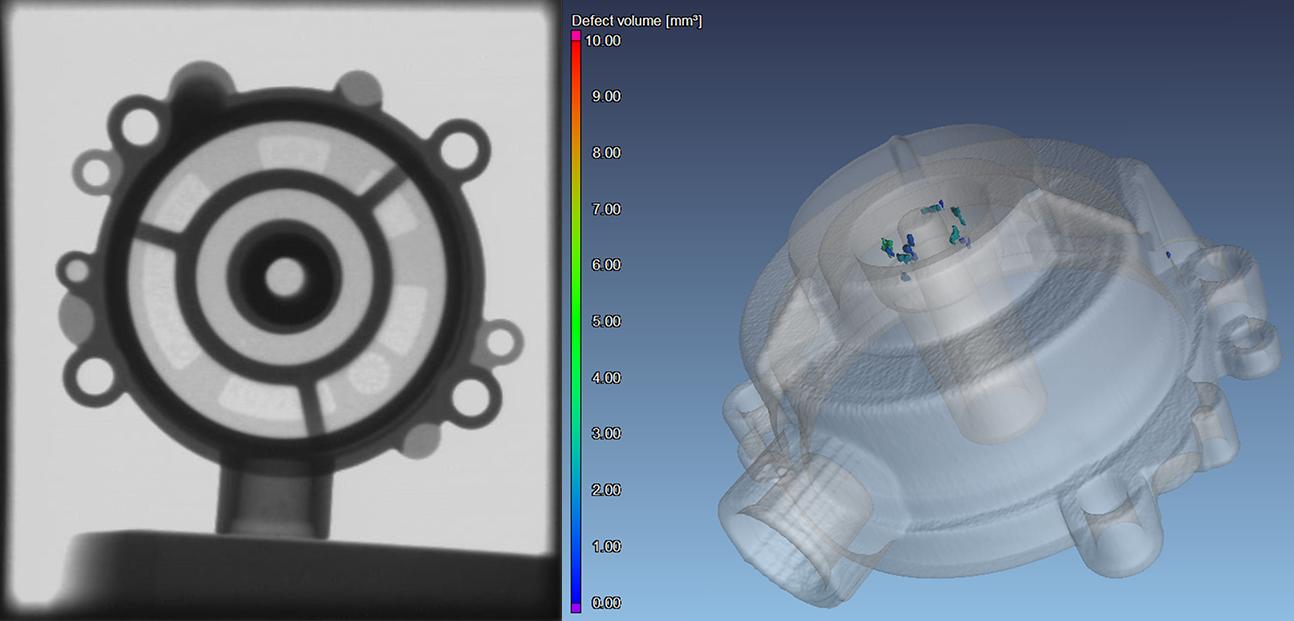Casting Optimization provides surprising Solutions
Die-casting is one of the key processes for the production of automotive components. This casting process offers a competitive manufacturing route for mass production, as a high productivity goes together with high precision components.
One of the key drawbacks of the process is the inherent high metal flow velocity resulting in an extremely turbulent filling behavior. This can lead to air entrapment or incompletely filled parts. Therefore, establishing a robust process design is crucial in order to establish an optimized process window. This ideally takes place simultaneously with the tool design during the planning phase.
Tecnopress S.p.A., Italy, has applied the methodology of virtual experimentation with MAGMASOFT® to enhance production processes of automotive components for many years. This allowed the company to reach required quality levels without affecting production costs. One automotive casting designed by the Italian engineers is a cover for a pneumatic valve in a braking system, mainly used in heavy duty machines. The component is not subject to heavy mechanical loads, but has to have perfect pressure tightness with high reliability. It is therefore subject to strict quality tests carried out in every production phase, from casting to final assembly.
A first analysis confirmed the design considerations of the Tecnopress engineers regarding velocity and temperature distribution during filling. The assessment also highlighted some concerns, especially regarding air entrapment in some areas of the casting (Figure 1).
Although the castings produced during the first sampling did not show defects upon visual inspection, the pressure tightness tests (air of up to 13 bar) after machining resulted in a significant failure rate. A CT scan carried out on the sample allowed identification of the root cause of the defects. (Figure 2).
Two areas of the casting characterized by concentrated porosity were close to machined surfaces, resulting in the high scrap rate. A close investigation of the results of the virtual analysis confirmed air entrapment to be the main cause of the defects, which was related to the specific filling dynamics.
To establish robust process conditions, the Tecnopress designers used the virtual optimization capabilities of MAGMASOFT®. Applying the MAGMA APPROACH, they started by deciding on the objectives to be reached. The target was to minimize air entrapment, surface turbulence and shrinkage porosity as a function of different process variables and modifications in the runner and gating design. To get a sound understanding, 192 different designs were analyzed constituting the basis to choose the best solution.
The MAGMASOFT® scatter chart showing the two main objectives (amount of air entrapment and surface turbulence during filling) allowed identification of the best design (one dot represents the results of one virtual experiment). The parallel coordinates diagram allowed to easily identify the parameters that characterized the best process conditions and runner design fulfilling the required quality (Figure 3).
The best configuration identified by the optimization with MAGMASOFT® highlighted that the trend to entrap air in the critical zones of the casting was particularly sensitive to the design and dimensioning of the casting ingates (Figure 4). Compared to the initial design, one of the three gates had to be thickened, the second needed to be thickened and relocated, whereas the third was to be relocated only. The designs suggested by the optimization run resulted in a surprising configuration which was not intuitive.
The tooling was modified in accordance with the optimized configuration. The results from sampling were very satisfying. The new design reduced the production scrap rate from the initial 30% down to 2%. X-ray controls on the sampled casting with new industrial CT equipment did not indicate concentrated porosity (Figure 5).
The virtual optimization phase allowed a quick and cheap identification of an improved configuration, drastically reducing porosity in the component. The Tecnopress engineers were able to provide time and cost effective support for robust decision making in this complex problem.
Tecnopress S.p.A., located in Brescia, Italy, stands for thirty years of experience in aluminum die casting linked to a wide range of finishings and precision machining guaranteed by an ISO TS 16949 certified quality assurance system. The strength and key-factor of the company lies in a dynamic cooperation with its mainly automotive customers from the technical feasibility assessment supported by mold flow simulation to the integrated supply of the finished castings.
